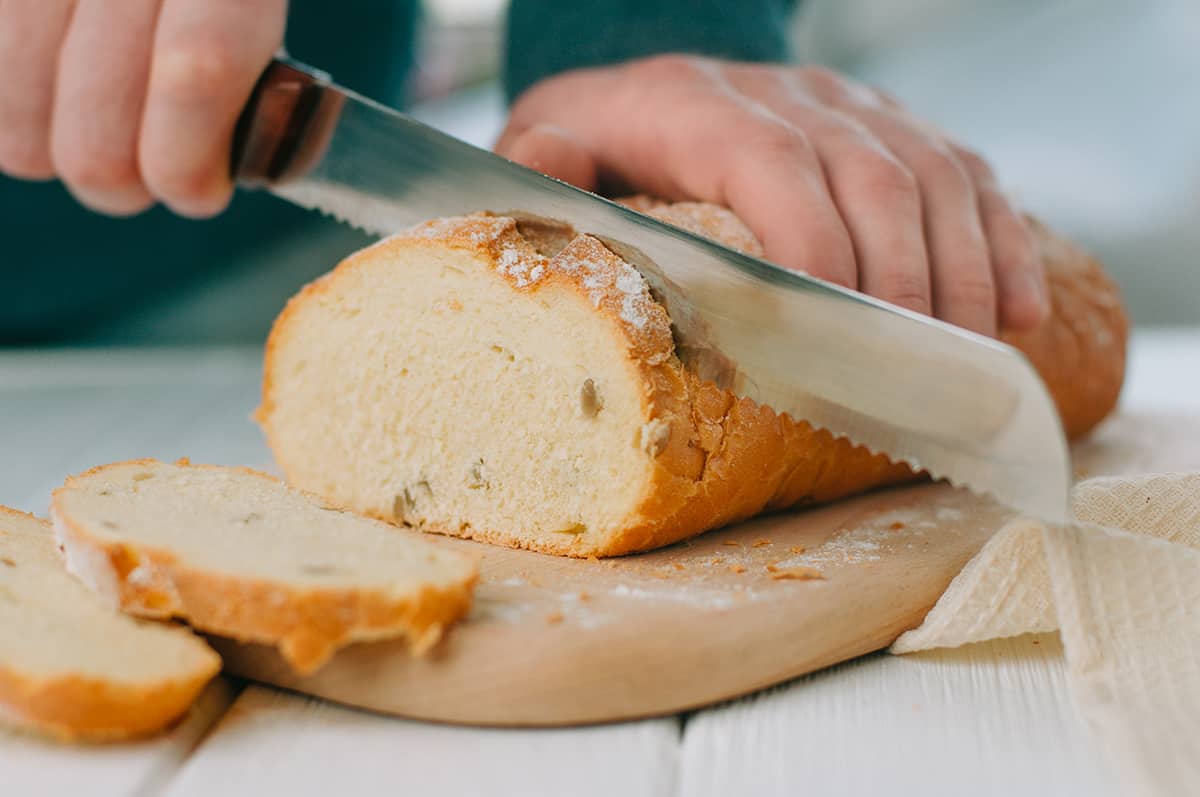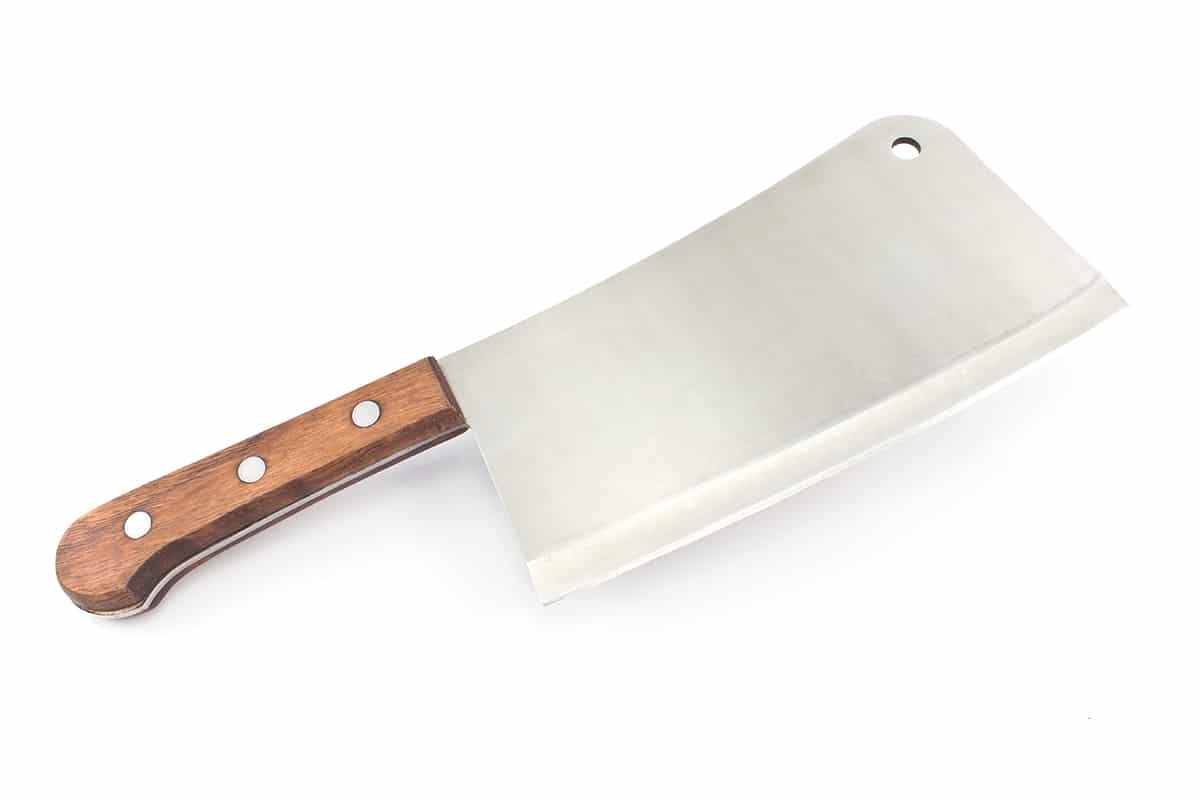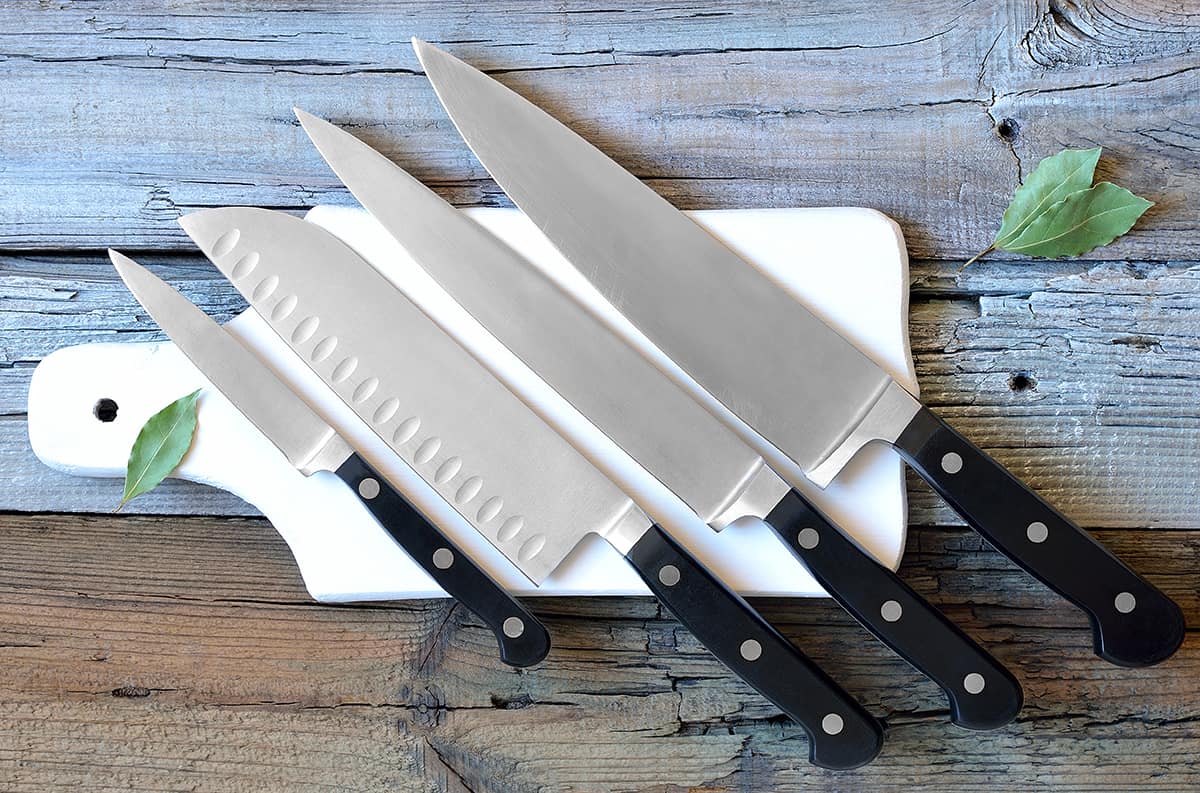Using a knife can be dangerous enough, but have you ever tried cutting through bone? Sure, you could try hacking through bones with your everyday chef’s knife, but you’d be risking a damaged blade or, even worse, a trip to the emergency room. The truth is, cutting bones requires a specific set of knives designed for that purpose.
Cleavers, boning knives, butcher knives, and Japanese Deba knives are all well-suited for bone cutting. Each has its own features and advantages, but they’re specifically crafted to handle the tough job of cutting through bones.
This guide will help you understand which knives are best for bone cutting, how to choose the right one for you, and how to care for it.
Why Do You Need a Specific Knife for Bone Cutting?
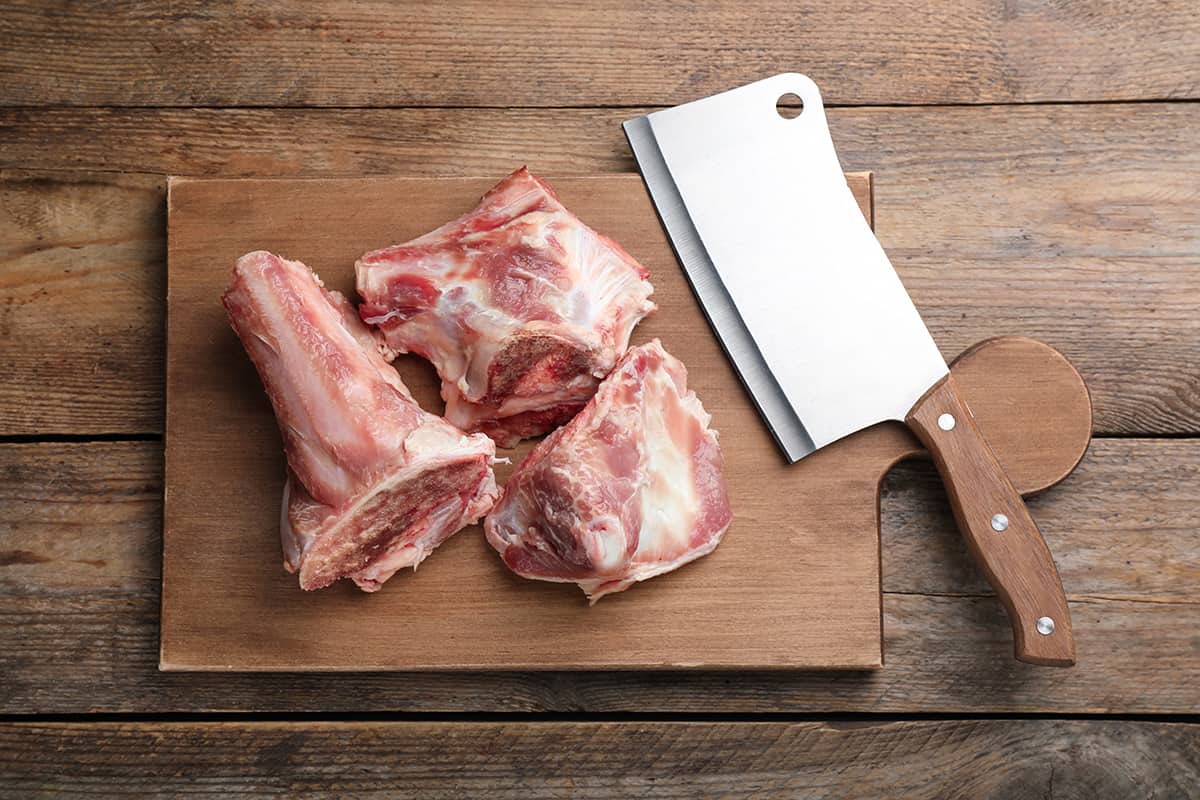
Cutting bones isn’t like slicing through a tomato or dicing an onion. Bones are tough and dense, requiring special tools to get the job done right. Using the wrong knife can result in damaged blades and, let’s be honest, a lot of frustration. So, why do you need a specific knife for bone cutting?
Your standard chef’s knife is versatile, designed for tasks like slicing, dicing, and chopping. However, these knives typically have thin blades that are prone to chipping or breaking when used on hard materials like bones. A chef’s knife is great for veggies but not for hacking through a chicken carcass.
Types of Knives Suitable for Bone Cutting
When it comes to bone cutting, not just any knife will do. Let’s dive into the types of knives that are up to this challenging kitchen task.
1. Cleaver
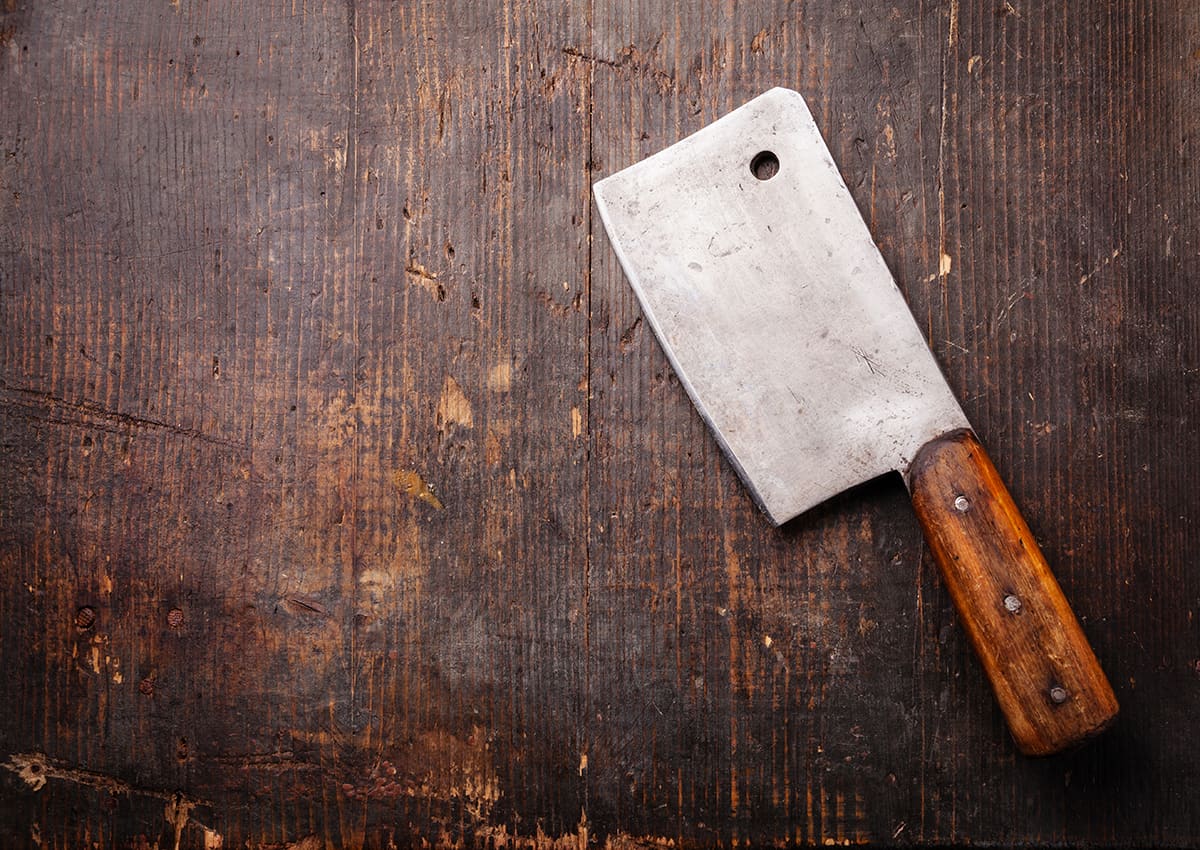
A cleaver is the heavyweight champ of the kitchen. It’s got a thick, rectangular blade designed for serious hacking and chopping. The blade is often weighted to help deliver powerful blows, enabling it to cut through bones, cartilage, and joints with ease.
Cleavers are the go-to for big jobs. Think of splitting a whole chicken, chopping through beef ribs, or breaking down a pork shoulder. If you’re into making your own bone broth, a cleaver will help you break those bones to release marrow.
2. Boning Knife

A boning knife is your precision tool. It has a narrow, flexible blade, allowing you to get in close to the bone and under the skin. While it’s not made for chopping through thick bones, it excels in tasks like fileting fish and removing bones from chicken and small game.
Boning knives are ideal for tasks requiring finesse and precision, like deboning a chicken thigh or fileting a fish. They’re not your tool for hacking through bone, but they’ll get the bones out of your way.
3. Butcher Knife
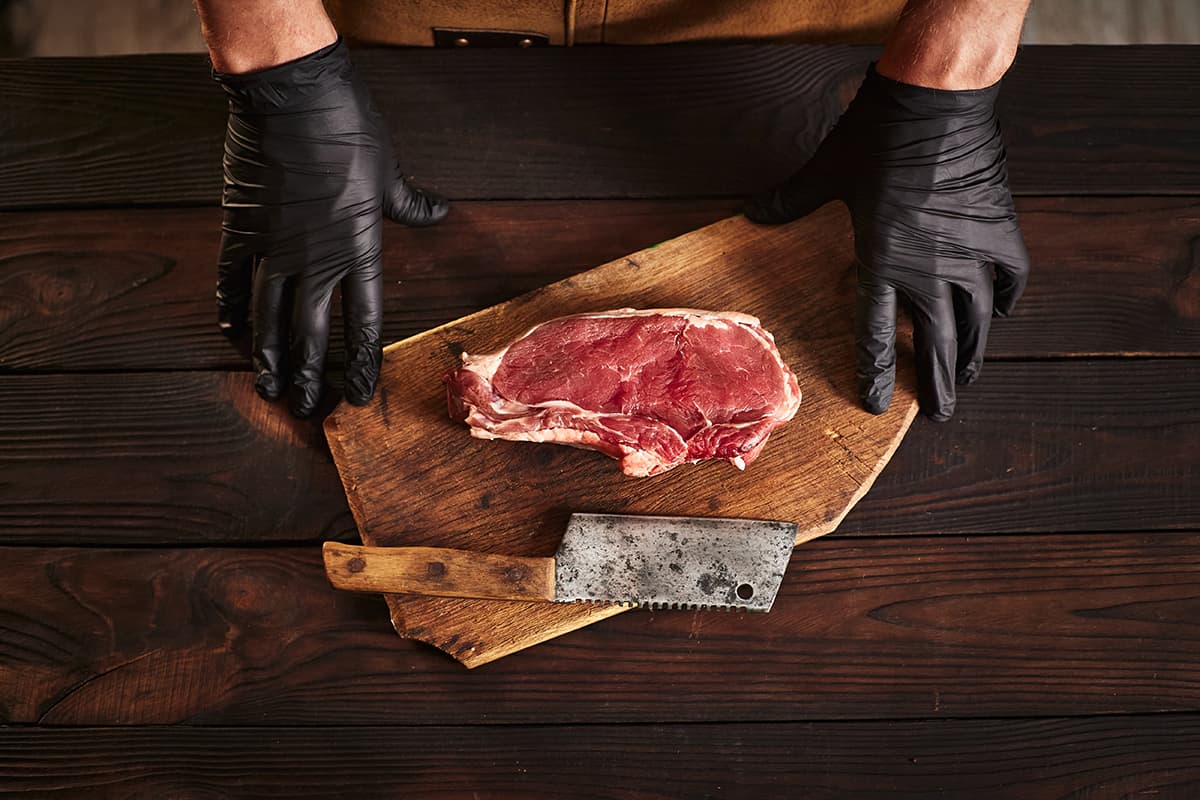
This is the multi-tasker of bone-cutting knives. It has a long, curved blade suitable for both slicing and heavy-duty cutting. The blade is typically thicker than that of a chef’s knife but thinner than a cleaver, giving you a balanced tool that can tackle a variety of tasks.
Butcher knives are versatile and can handle tasks ranging from slicing large cuts of meat to breaking down smaller bones. They’re commonly used for sectioning large pieces of meat like beef and pork, as well as for tasks that require a bit more precision than a cleaver can offer.
4. Japanese Deba Knife
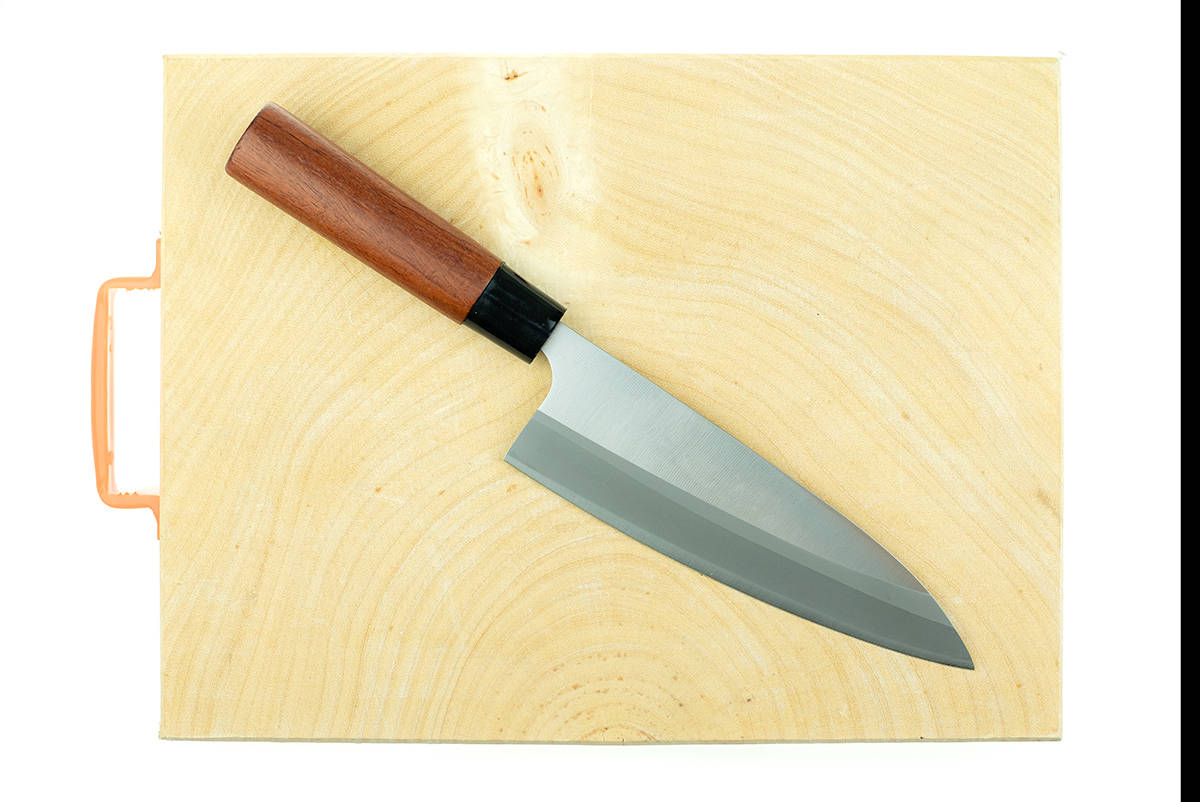
The Deba knife hails from Japan and is traditionally used for fileting fish. It’s got a thick spine and a single beveled edge, designed for specific, clean cuts. While it’s great for fish, it’s robust enough to handle small to medium bones too.
Deba knives are often used for breaking down fish but can also be employed for poultry and other small animals. They offer a level of precision that’s somewhere between a boning knife and a butcher knife, making them highly versatile.
Factors to Consider When Choosing a Bone Cutting Knife
Picking the right bone cutting knife isn’t just a matter of grabbing the biggest, sharpest thing in your drawer. There are a bunch of factors that’ll help you make a wise choice.
1. Soft Bones vs. Hard Bones
If you’re looking to filet a fish or debone a chicken, you won’t need the same type of knife as when you’re hacking through a beef rib. Soft bones and cartilage are easier to cut through, so something like a boning knife may suffice. For harder bones, you’ll need the heavy-duty power of a cleaver.
2. Frequency of Use
If bone cutting is a once-a-year thing for you, maybe you don’t need a specialized knife. But if you’re into regular butchery or love making homemade broth, investing in a good-quality knife (or two) will pay off.
3. Blade Material
Stainless steel knives are generally rust-resistant and easy to clean. These are low-maintenance options that are great for those who prefer convenience over an ultra-sharp edge.
High-carbon steel knives offer extreme sharpness and edge retention. They do require some extra love to keep them rust-free, but if you’re all about that cutting precision, this is the way to go.
4. Blade Design
Thicker blades, often found in cleavers and butcher knives, provide the power needed for tougher tasks. Thinner blades like those in boning knives are more suited for precision work.
Some knives feature a straight edge, great for clean cuts, while others may have a serrated or scalloped edge that can grip the bone better. Choose based on the type of bone you’re cutting and your personal preference.
5. Handle Comfort
You’re going to be wielding this knife, possibly for a while, so you want a handle that’s comfy in your hand. Materials range from wood and plastic to metal. Each has its own set of pros and cons related to comfort, grip, and hygiene.
Caring for Your Bone Cutting Knives

So, you’ve shelled out for a killer bone-cutting knife, or maybe you’ve inherited Granny’s vintage cleaver. Either way, a well-cared-for knife will last longer and perform better.
Cleaning Your Knife
- After each use, give your knife a quick wipe with a damp cloth to remove any immediate residue. This small habit goes a long way in keeping the blade in top shape.
- Avoid the dishwasher; it’s too harsh for most knives. Hand wash using mild soap and water, and then dry it thoroughly with a towel.
- For an extra layer of cleanliness, especially after cutting raw meat, a mild bleach solution can be used. Just remember to rinse well.
Storing Your Knife
These are your best bets for storage. They keep the blade from coming into contact with other utensils, preventing nicks and dulling.
If you must keep your knife in a drawer, use a blade guard or sheath. This protects both the blade and your fingers when rummaging around.
Sharpening the Blade
- This classic sharpening technique is effective but takes a bit of skill. You’ll need to soak your whetstone and then slide the blade across it at an angle. Youtube tutorials can be a life-saver here.
- For quick touch-ups between major sharpenings, a honing rod can help realign the blade. A few strokes before you start cutting can make a difference.
- If you’re not into DIY sharpening, many kitchen supply stores offer sharpening services. Just drop off your knife and pick it up when it’s sharp as new.
Blade Maintenance
High-carbon steel blades benefit from a light coating of food-safe mineral oil. It helps to prevent rust and keeps the blade sliding smoothly through whatever you’re cutting.
Check for Nicks and Chips
Small imperfections can lead to bigger issues over time. If you spot any, it’s time for a thorough sharpening or even professional repair.
Handle Care
- Water can seep into the handle, causing it to weaken or even crack over time. So, no leaving the knife in the sink!
- Wipe down the handle with a damp cloth and mild soap. If it’s wood, occasional oiling can prevent drying and cracking.
- Make it a habit to inspect your knife for wear and tear. Check the handle for any loosening and give the blade a once-over for any signs of corrosion or damage.
Safety Tips When Using Bone Cutting Knives
Before you go all “Iron Chef,” let’s talk safety. The sharper and more powerful the knife, the more cautious you need to be.
Before You Cut
- Prep Your Workstation: Start with a clean, dry, and clutter-free cutting board. You want that board to stay put, so stick a wet paper towel under it to make it less slippery.
- Wear Appropriate Gear: A cut-resistant glove on the hand that’s not holding the knife is not a bad idea. Plus, it makes you look super professional.
Grip and Hand Position
- Pinch Grip: Hold the knife handle, but also pinch the blade between your thumb and index finger. This gives you better control and is generally more stable than just gripping the handle.
- Guiding Hand Technique: Your other hand isn’t just there for show. Use the claw grip technique, where you tuck your fingertips under and use your knuckles to guide the knife. Keep those fingertips away from the sharp stuff.
If Things Get Sticky
- Knife Stuck in Bone: If your knife gets stuck, don’t yank it out like you’re pulling Excalibur from the stone. Wiggle it gently to loosen it, or if necessary, use a rubber mallet to tap it free.
- Slip-Ups and Close Calls: If you have a slip or near miss, take a moment. Assess what went wrong and adjust your technique.


